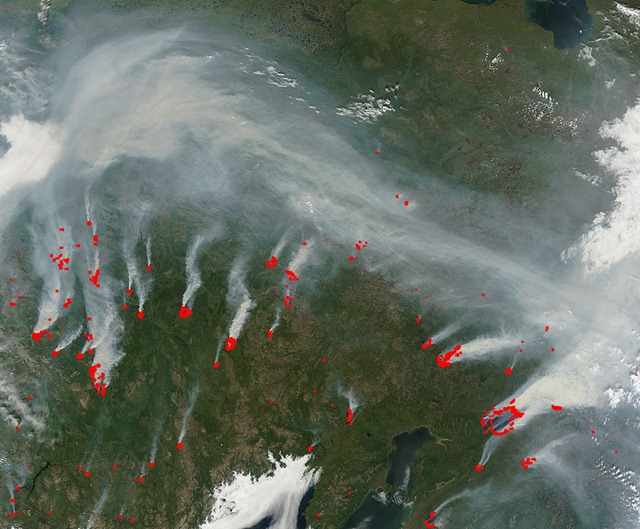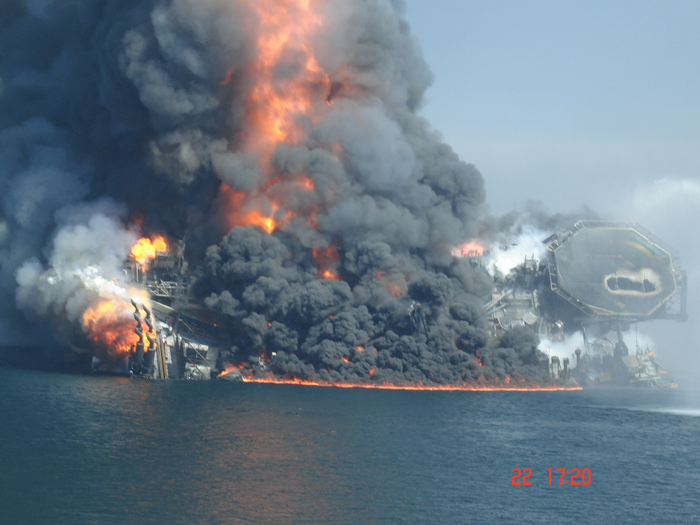20 most popular stories of 2010
Here are 2010’s most-viewed stories on Desdemona. A few have had further developments since they were posted, and I’ve noted this where appropriate. Not surprisingly, the most popular event was the Deepwater Horizon oil spill, with seven entries (that’s why this post is about the top twenty stories, instead of the top ten). Six of the most popular stories were posted in 2009, so these have real legs. The oddest result may be the continued popularity of a 2009 story on trash in the Maldives, which comes in at #2 for 2010. 20. Elephants, other iconic animals dying in Kenya drought
Friday, January 01, 2010 More than sixty African elephants and hundreds of other animals have died so far in Kenya amid the worst drought to hit the country in over a decade, conservationists announced. (See pictures of the drought’s recent toll, and watch video of the drought’s impact on elephants.)
19. Arctic tribe: Caribou numbers dropping fast, ice too thin to hunt on
Thursday, January 01, 2009 Chief Bill Erasmus of the Dene nation in northern Canada brought a stark warning about the climate crisis: The once abundant herds of caribou are dwindling, rivers are running lower and the ice is too thin to hunt on.
18. Louisiana fishermen contemplating suicide, need mental health services
May 22, 2010 The situation in the gulf is getting so dire for some in the seafood industry, they’ve thought about committing suicide. Steps to intervene are underway.
17. Image of the Day: Russia Forest Fires and Smoke Viewed from Orbit, 30 July 2010 
Friday, July 30, 2010 During an historic heat wave and severe drought, more than 90,000 hectares (200,000 acres) are burning out of control. July has been the hottest month ever recorded in Moscow, fields and forests have dried up, and much of this season’s wheat harvest has been ruined.
16. Killer funnel-web spiders invade Sydney
January 20, 2010 Insect experts have warned that the city is being invaded by funnel-webs, considered one of the world’s most aggressive and poisonous spiders. A reptile park north of Sydney where people can drop off captured specimens, and where they are milked of their venom to make antidote, has received more than 40 males in recent weeks. Males are deadlier than females.
February 07, 2010 Yes, the mid-Atlantic region appears headed toward an epic snow storm as “amazing moisture feeds into what is already a gigantic system,” according to the Capital Weather Gang. But while the anti-science crowd will no doubt tout that as evidence we aren’t warming — just as they did with the “cold snap” in early January — in fact, climate science predicts we will see more extreme precipitation events year-round as warming puts more moisture into the atmosphere [see Was the “Blizzard of 2009″ a “global warming type” of record snowfall — or an opportunity for the media to blow the extreme weather story (again)?].
14. Graph of the Day: The Great Pacific Garbage Patch
Friday, March 26, 2010 By now, most of us are aware that there is a large patch of floating plastic in the middle of the Pacific Ocean. What you may not know is that it’s not made up of plastic bags and empty bottles. It’s made up of billions of tiny pieces of plastic, and it’s basically invisible unless you’re floating in it. While this might seem better, it’s actually much worse for the environment—and for you. Our latest Transparency is a look at the Pacific Gyre and the plastic floating in it.
13. Half of euro zone countries at risk of sovereign default 
Saturday, January 02, 2010 After two years of crashing banking systems and economic recession, the euro zone enters 2010 with a full-blown debt crisis. The European Commission warns that public finances in half of the 16 euro-zone nations are at high risk of becoming unsustainable.
12. Hawaii dolphin species vanishes, likely killed by longline fishing
Friday, April 03, 2009 The population of false killer whales in waters close to Hawaii appears to have dramatically declined over the past 20 years, a new study says.
11. Graph of the Day: Mid-tropospheric Carbon Dioxide, Sep 2002 – Jul 2008
January 04, 2010 This visualization is a time-series of the global distribution and variation of the concentration of mid-tropospheric carbon dioxide observed by the Atmospheric Infrared Sounder (AIRS) on the NASA Aqua spacecraft. For comparison, it is overlain by a graph of the seasonal variation and interannual increase of carbon dioxide observed at the Mauna Loa, Hawaii observatory.
10. Image of the Day: BP / Gulf oil spill – Slick entrained in Loop Current 
Monday, May 17, 2010 Today’s MODIS / Terra satellite image is the most cloud-free we’ve seen in many days, and what it reveals is disturbing: part of the still-massive Gulf oil slick has apparently been entrained in the strong Loop Current, and is rapidly being transported to the southeast toward Florida. The total area covered by slick and sheen, at 10,170 square miles (26,341 km2), is nearly double what it appeared to be on the May 14 radar satellite image, and is bigger than the state of Maryland.
November 29, 2009 Australia, already the driest inhabited continent on Earth, is drying up for good. The state of New South Wales is particularly hard-hit, with catastrophic mega-fires destroying the eucalyptus forests, major rivers reduced to muddy streambeds, and dams drained to nothing but algae-filled ponds. [Since this was posted, Australia’s “Big Dry” has been replaced by the “Big Wet,” with flooding and mayhem in the previously drought-plagued state of New South Wales. Desdemona fully expects that when the 2010 La Niña passes, the drought trend will re-emerge.]
8. Garbage disaster looms at giant Mexico City dump
Thursday, February 12, 2009 Mexico City is facing a crisis over where to put its trash — enough to fill four sports stadiums a year — with its sprawling dump already crammed to bursting and under a closure order. [The Bordo Poniente landfill near Nezahualcoyotl is to be closed in 2011: Mexico to Close Landfill, Among World’s Largest.]
7. Crew argued over drilling plan before rig explosion 
Saturday, May 15, 2010 About 11 hours before the Deepwater Horizon exploded, a disagreement took place between the top manager for oil giant BP PLC on the drilling rig and his counterpart for the rig’s owner, Transocean Ltd., concerning the final steps in shutting down the nearly completed well, according to a worker’s sworn statement.
6. Biologists fear Gulf wildlife will suffer for generations
Friday, June 18, 2010 Oiled birds may be cleaned up and beaches may be scrubbed, but the lingering affect of the poisonous gunk from the BP oil spill may be generations of wildife that is riddled with disease and deprived of food, Greenpeace researchers claim.
5. NPR: Gulf oil spill more than 10X greater than thought
Thursday, May 13, 2010 NPR has learned that much more oil, 70,000 barrels a day or more than ten times the official estimate, is gushing into the Gulf of Mexico from the Deepwater Horizon pipe, based on scientific analysis of the video released Wednesday. [This estimate turned out to be pretty close to the final estimate of 53,000 barrels per day.]
4. Graph of the Day: Projected Oil Spill Path Due To Gulf Loop Current
Saturday, May 01, 2010 [We may all be thankful that the BP Deepwater Horizon oil spill was not significantly entrained into the Gulf Loop Current.]
3. ‘Game over’ for Great Lakes if Asian carp penetrate final barrier 
Friday, December 04, 2009 Gov. Jennifer Granholm wants Michigan’s attorney general to take legal action to prevent Asian carp from invading the Great Lakes. Granholm and Lt. Gov. John Cherry sent Attorney General Mike Cox a letter today urging him to “pursue every legal tool” available.
2. Maldives ‘rubbish island’ turns paradise into dump
Sunday, January 04, 2009 Thilafushi receives hundreds of tonnes of rubbish from other islands in the Maldives every day. Sixteen years ago it was an unspoilt coral reef. But it is now growing by one square metre every day with rubbish. Elin Hoyland took these striking photographs that document the growing problem of waste disposal on these beautiful islands.
1. Scientists find oil plume below Gulf’s surface
Friday, May 14, 2010 Since the Gulf of Mexico oil spill began three weeks ago, most eyes and cameras have been focused on the widening, orange slick. But now, as experts argue that the flow rate could far exceed the government’s estimate of 210,000 gallons a day, a team of independent scientists studying the water in and around the disaster zone have found another problem: stores of leaked oil lingering beneath the surface in long, stringy filaments and snowflake-like collections.